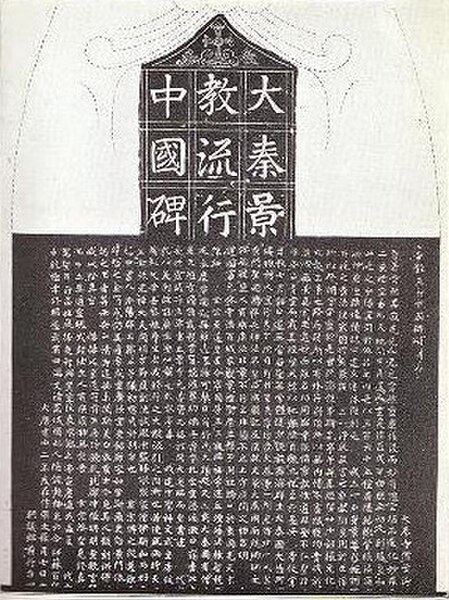Church of the East in China
The Church of the East historically had a presence in China during two periods: first from the 7th through the 10th century in the Tang dynasty, when it was known as Jingjiao, and later during the Yuan dynasty in the 13th and 14th centuries, when it was described alongside other foreign religions like Catholicism and possibly Manichaeism as Yelikewen jiao.
The Xi'an Stele, erected in Chang'an 781.
The original work
A copy
A restoration
The Church of the East or the East Syriac Church, also called the Church of Seleucia-Ctesiphon, the Persian Church, the Assyrian Church, the Babylonian Church or the Nestorian Church, is one of three major branches of Nicene Eastern Christianity that arose from the Christological controversies of the 5th and 6th centuries, alongside the Miaphisite churches and the Chalcedonian Church.
Ruins of the Monastery of Mar Eliya in Mosul, Iraq in 2005. It was destroyed by ISIS in 2014.
Palm Sunday procession of Nestorian clergy in a 7th- or 8th-century wall painting from a church at Karakhoja, Chinese Turkestan
Mogao Christian painting, a late-9th-century silk painting preserved in the British Museum.
Feast of the Discovery of the Cross, from a 13th-century Nestorian Peshitta Gospel book written in Estrangela, preserved in the SBB.







